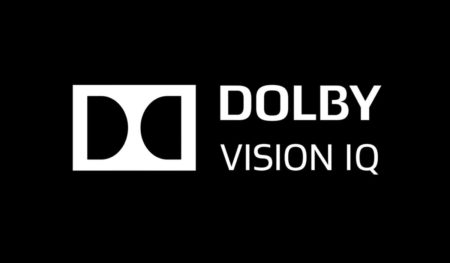Noticias
Dolby Vision IQ
En los últimos meses hemos estado viendo cómo el HDR se va imponiendo en el día a día de la producción audiovisual y por consecuencia en el consumo del mismo, por ello nos encontramos nuevos estándares que van saliendo al mercado: Dolby Vision, HLG, HDR10+… y ahora parece que Dolby Vision ha trabajo en un nuevo estándar de visualización HDR en televisiones, el Dolby Vision IQ, aunque eso sí, solo en aquellas que sean compatibles. Se trata de una evolución del ya conocido Dolby Vision y que está enfocado a las smart TV.
Con las nuevas televisiones en HDR la forma de consumir del espectador cambia radicalmente y Dolby Vision IQ pretende mejorar todavía más esta experiencia. Con la nueva propuesta de Dolby podemos llegar a alcanzar niveles de brillo más altos, pasando los 4000 nits y una profundidad de color de 10 bits. Habrá que ver si con Dolby Vision IQ llegaremos a alcanzar los 10.000 nits teóricos de la primera propuesta de Dolby así como los 12 bits de profundidad.
¿Por qué Dolby Vision IQ estará disponible solo en aquellas televisiones compatibles? El sistema IQ se basa en un cálculo de los niveles de luz que existan en la estancia donde estamos viendo el contenido. Estos niveles de luz son medidos gracias a unos sensores que deben incorporar las televisiones para que analice la luz ambiente. Al igual que ya pasaba con Dolby Vision, los metadatos le sirven a la televisión para adaptar el contenido a la luminosidad de la habitación.
De esta forma ya no hará falta ir cambiando los ajustes de la televisión, ya que al ser un análisis dinámico, la luz va variando de forma continua para ofrecer siempre los mejores niveles de brillo en cada momento sin tener que entrar en los menús.
De momento son dos las marcas que se han sumado a la tecnología Dolby Vision IQ para incorporarlo en sus nuevas Smart TV. Estamos hablando de LG y Panasonic, y habrá que ver si nuevas marcas se suman a esta forma de consumir contenido. Por otro lado, hay que recordar que muchas smart TV están trabajando para lanzar el modo cineasta, un modo que ofrece visualizar el contenido de la forma más fiel a como se entregó y habrá que ver cómo interactúan ambos modo de visualización.
Aprovecha el 60% de descuento en los cursos online. El 100% de los beneficios recaudados con los cursos se donarán al Fondo de Respuesta al COVID-19 de la Organización Mundial de la salud. #Yomequedoencasa, aprovecha para aprender a la vez que contribuyes a una buena causa.



